
18 13 23 29 The Perplexing Power Of Process And Methodology In Complex B2B Sales - Mike Kunkle, SPARXiQ How To Build A High-Quality Email List That Drives Business Success - Gerri Knilans, Trade Press Services What Company Do You Admire Most? - Shep Hyken, Shepard Presentations Will The 2023 Economy Be Better? - Karla Jo Helms, JoTo PR Disruptors FEBRUARY 2023 • Vol.22 • No.02 (ISSN 2564-2057) PRICING FOR THE HIGHEST PROFITABILITY CAN COST YOU A BUNDLE - William A. Cohen, Ph.D, President, Institute of Leader Arts
FEBRUARY
( ISSN 2564-2057)
On the Cover
Pricing For The Highest Profitability Can Cost You A Bundle
Debunking calculating a price through one of the many methods of “quantitative analysis for business decisions” and attaining maximum profitability
- William A. Cohen, Ph.D, President, Institute of Leader Arts
Articles
10 How To Get Past The Gatekeeper
Importance of conversations and real-world relationship-building

- Joanne Black, Founder, No More Cold Calling
16 Four Ways To Improve Decision-Making
Even When You’re Stressed
Rise above the immediate stresses of the moment
- Dr. Jim Loehr, Co-author, and Dr. Sheila Ohlsson Walker, Co-author, ‘WISE DECISIONS’
21 Have A Trust Deficit?
Here’s how to build and keep organizational trust
- Howard M. Guttman, Principal, Guttman Development Strategies
26 Leadership In The New World Of Work
Four ways to get into your leadership Genius Zone
- Catherine Mattiske, Founder, The Performance Company
07
INDEX HCM Sales, Marketing & Alliance Excellence
2023 Vol.22
No.02
INDEX
The Perplexing Power Of Process And Methodology In Complex B2B Sales
Should sales process be adaptable? Agile? Fluid?
 - Mike Kunkle, Vice President, Sales Effectiveness Services, SPARXiQ
- Mike Kunkle, Vice President, Sales Effectiveness Services, SPARXiQ
Top Picks 13 18
How To Build A High-Quality Email List That Drives Business Success
Email offers opportunities for personalization, custom design, automation and analytics

 - Gerri Knilans, President, Trade Press Services
- Gerri Knilans, President, Trade Press Services
What Company Do You Admire Most?
In business, we compare ourselves to the competition
- Shep Hyken, Chief Amazement Officer, Shepard Presentations
23 29
Will The 2023 Economy Be Better?

The law of familiarity transcends economic uncertainty
- Karla Jo Helms, Founder & CEO, JoTo PR Disruptors
Attn: HR Solution Providers!
HR.com makes HR Professionals smarter and we are sure your solutions do as well.
That being said, we understand how hard it is to market in the Human Capital space, get the attention of your target audience and show HR departments that you are a valuable resource. So, how do you overcome this hurdle?
Easy. Work with HR.com.
With over 19 years experience working with HR solution providers, we give over 1,200,000 HR professionals access to the tools and resources they need to succeed. We work side-by-side with HR solution providers to help them generate sales leads, grow market share, build brand awareness and promote industry expertise.
Checkout our growing list of tools and resources our vendors can take advantage of to get noticed by HR professionals!
HR Marketing Institute
The HR Marketing Institute (HRMI) is the ONLY community of Marketing Professionals in the Human Capital space dedicated exclusively to the issues and needs of the marketing professionals and their businesses. This is a community of Marketing professionals who dedicate their time to marketing in the Human Capital space and who support each other to make the right decisions so that your marketing initiatives deliver the impact you need to succeed. Membership includes networking with peers, face to face summits, webcasts, research and benchmarking tools.
Webcasts and Virtual Events
Thought Leadership, Lead Generation and Educational Content
HR.com’s Webcasts and Virtual Events are more than an exercise in brand awareness. They are a comprehensive and groundbreaking way of generating tangible sales leads, while showcasing you as an industry authority to a captive audience of clients, prospects and the entire HR.com global community, giving you a greater market reach. In addition, HR.com’s one-hour webcasts provide valuable education and certification credits for today’s forward-thinking HR professionals.
Research
Build your brand, content marketing strategies, and thought leadership with exclusive HR.com research. Choose between custom featured research or state-of-the-industry research sponsorship. With custom featured research, we work with you to develop research on the topic of your choice or align your brand with any of this year’s State of the Industry hot topics to highlight the latest HR trends. No matter which research strategy you choose, come away with your very own branded research report and infographic, establish yourself as an industry thought leader by presenting a webcast, get key insights from the opinions of highly qualified HR professionals, and maximize your ROI, and build a healthy sales funnel with over 1,000 qualified leads.
Managed Email Campaigns
Looking to expand your marketing reach? Build long-term customer loyalty? Generate high response rates? Drive website traffic? The value of HR.com’s opt-in direct email program allows you to do just that. Nurture potential buyers on a consistent basis through our managed campaign program. Deliver your message directly to HR decision makers’ inboxes. HR.com’s direct email lists are 100% optin, GDPR, CASL, and CAN-SPAM compliant and contain only the most exclusive names and companies in the human capital industry.
Online Advertising
Onsite advertising is a great way to reinforce brand and profile new products associated with a product launch. HR.com offers a variety of online advertising solutions including banner ads and premier homepage positioning making it a cost-efficient option for maximum brand exposure.
Buyer’s Guide
Be the Answer to the Questions HR Decision Makers are Asking

The HR.com’s Buyer’s Guide is where HR departments from around the world turn first when they need products and services. Put your company at the top of their list and get listed with the resource that HR professionals and decision makers trust.
Excellence Publications Interactive Targeted Learning ePublications
Aimed at Reaching Your Core Audience
HR.com’s 12 targeted and focused monthly online publications provide an invaluable collection of high-quality HR content and experts’ solutions to our members. Ten of our publications now feature themed editions that focus on specific topics. Sponsorship of research reports and webcasts aligned with the themes are also available.
For more information phone: 1.877.472.6648 | email: sales@hr.com | www.HR.com
Exclusive HR.com research
Our solutions will get you more clients, brand exposure, sales –and a marketing community too!
Editorial Purpose
Our mission is to promote personal and professional development based on constructive values, sound ethics, and timeless principles.
Excellence Publications
Debbie McGrath CEO, HR.com - Publisher
Sue Kelley Director (Product, Marketing, and Research)
Babitha Balakrishnan and Deepa Damodaran Excellence Publications Managers and Editors
Deepak S Senior - Design and Layout
HCM Sales, Marketing & Alliance Excellence Team
Deepa Damodaran Editor

Nataraj Ramesh Design and Layout (Digital Magazine)
Vibha Kini Magazine (Online Version)
Submissions & Correspondence
Please send any correspondence, articles, letters to the editor, and requests to reprint, republish, or excerpt articles to ePubEditors@hr.com
For customer service, or information on products and services, call 1-877-472-6648
HCM Sales, Marketing & Alliance Excellence (ISSN 2564-2057)

is published monthly by HR.com Limited, 56 Malone Road, Jacksons Point, Ontario L0E 1L0 Internet Address: www.hr.com
Debbie Mcgrath Publisher, HR.com
Deepa Damodaran Editor, HCM Sales, Marketing & Alliance Excellence
Pricing Products for the Highest Profitability: Boon or Bane?
“Everyone knows” that it was Japanese companies that invented and popularized the transistor radio and that Japanese companies sold millions of their transistor radios in the U.S. and dominated the market for years after they had introduced this product. However, the truth is that transistor radios were invented and first sold by AT&T! Moreover, AT&T dominated the U.S. market long before any Japanese company sold a single transistor radio.
So, how did AT&T lose to Sony despite being the inventors of the transistor radio?
“Pricing a product for maximum profit attracts more competitors than would be attracted normally, and some of them may have advantages unavailable to you,” notes Institute of Leader Arts Founder William A. Cohen.
Check out William’s Pricing For The Highest Profitability Can Cost You A Bundle, where he delves into why calculating a price through one of the many methods of “quantitative analysis for business decisions” and attaining maximum profitability to attain success with a new product or service is not always a foolproof plan. Learn what Sony,
then known as Tokyo Telecommunications Engineering Corporation, did differently to capture the market.
Email has been around for more than 50 years, yet it feels more rooted in our daily lives than ever. Even with the growth of social media and a constant flux of new platforms and applications, email remains a pillar for digital communications, including marketing. Learn How To Build A High-Quality Email List That Drives Business Success, in Trade Press Services President Gerri Knilans’ article.
Also, read The Perplexing Power Of Process And Methodology In Complex B2B Sales by SPARXiQ’s Mike Kunkle, and What Company Do You Admire Most? by Shepard Presentations’ Shep Hyken, among others featured in this edition of HCM Sales, Marketing & Alliance Excellence.
We hope these will help you achieve excellence in your sales and marketing efforts.
Happy Reading!
Disclaimer: The views, information, or opinions expressed in the Excellence ePublications are solely those of the authors and do not necessarily represent those of HR.com and its employees. Under no circumstances shall HR.com or its partners or affiliates be responsible or liable for any indirect or incidental damages arising out of these opinions and content.
EDITOR’S NOTE
Subscribe now for $99 / year And get this magazine delivered to your inbox every month Become a Member Today to get it FREE! SIGN UP OR For Advertising Opportunities, email: sales@hr.com Copyright © 2023 HR.com. No part of this publication may be reproduced or transmitted in any form without written permission from
the publisher. Quotations must be credited.
Write to the Editor at ePubEditors@hr.com
In a world of unparalleled challenges (global pandemic, racial injustice, political rivalry, digital 4.0, emotional malaise), uncertainty reigns. Finding opportunity in this context requires harnessing uncertainty and harnessing starts with reliable, valid, timely, and useful information. The Excellence publications are a superb source of such information. The authors provide insights with impact that will guide thought and action.

Excellence publications are my ‘go-to’ resource for contemporary and actionable information to improve leadership, engagement, results, and retention. Each edition offers rich and diverse perspectives for improving the employee experience and the workplace in general.


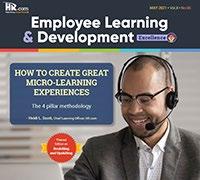
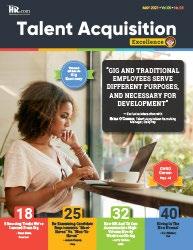
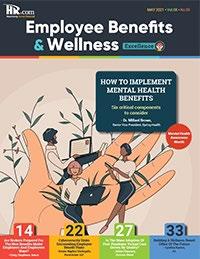

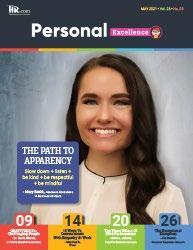
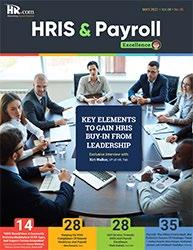
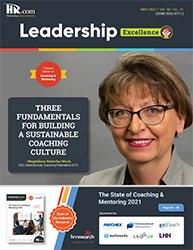
I regularly read and contribute to Leadership Excellence and Talent Management Excellence. I use many of the articles I read to augment my own presentations and I often share the articles with my clients. They are always quick, right on target for the latest issues in my field, and appreciated by my clients. If you want to stay up to date on the latest HR trends, choose a few of the different issues from the Excellence series of publications.
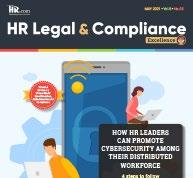
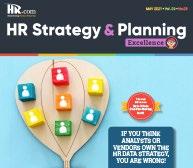
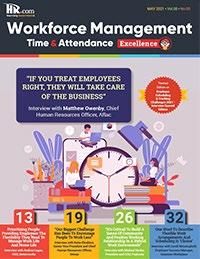
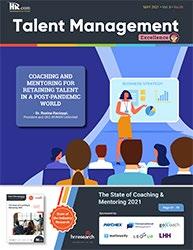
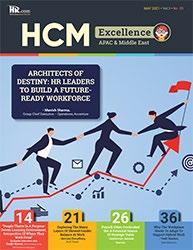
We’re eager to hear your feedback on our magazines. Let us know your thoughts at ePubEditors@hr.com
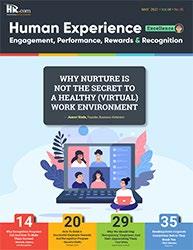 Dave Ulrich
Rensis Likert Professor, Ross School of Business, University of Michigan Partner, The RBL Group
Julie Winkle Giulioni Author, Virtual /Live Keynote Presenter, Inc.’s Top 100 Leadership Speakers
Dr. Beverly Kaye CEO, BevKaye&Co.
Dave Ulrich
Rensis Likert Professor, Ross School of Business, University of Michigan Partner, The RBL Group
Julie Winkle Giulioni Author, Virtual /Live Keynote Presenter, Inc.’s Top 100 Leadership Speakers
Dr. Beverly Kaye CEO, BevKaye&Co.
WHY EXCELLENCE PUBLICATIONS?
Pricing For The Highest Profitability Can Cost You A Bundle
Debunking calculating a price through one of the many methods of “quantitative analysis for business decisions” and attaining maximum profitability
By William A. Cohen, Ph.D, Institute of Leader Arts
Beforehe died, Peter Drucker debunked a well-known approach for attaining success with a new product or service by calculating a price through one of the many methods of “quantitative analysis for business decisions” and attaining maximum profitability. If you priced high and charged “as much as the market would bear” – in other words the highest possible price that could be squeezed out of the market while customers continued to buy, you should make all the profit you could while you could.
The theory is that you can reduce the price later to defeat competitors that have been attracted by your high profitability and enter the market. Also, by using the money you obtained with your high price, you can advertise more than competitors and use other means of promoting your product to maintain your dominance.
Drucker Disagreed
However, though Drucker agreed that profit is as essential for sustaining a business as oxygen is for continual breathing, profit, not maximum profitability, is the essential element. There is a big difference between the two. In fact, maximum profitability is not only not essential, but may not even be desirable or even possible. For example, to treat a life-threatening
sickness, potential buyers of a medicine may be willing to pay almost any price if the product is the only medicine available.
That might result in high profitability, but it is hardly beneficial financially for those needing the product or for society. Moreover, it is unethical to demand an unreasonably high price for products, such as cancer medicines, even if legal restrictions do not restrict the price. Of course, pricing high briefly to confirm the quality of your product versus a competitor’s may be acceptable, but pricing high to attain “all the market will bear” will eventually get you in trouble and succeed mostly in attracting additional competitors.
Guess Who Invented and Introduced the Transistor Radio?
Pricing the product for maximum profit attracts more competitors than would be attracted normally, and some of them may have advantages unavailable to you. For example, “everyone knows” that it was Japanese companies that invented and popularized the transistor radio and that Japanese companies sold millions of their transistor radios in the U.S. and dominated the market for years after they had introduced this product.
Submit Your Articles HCM Sales, Marketing & Alliance Excellence presented by HR.com FEBRUARY 2023 7 COVER ARTICLE
The truth is that transistor radios were invented and first sold by AT&T, not a Japanese company. Moreover, AT&T dominated the U.S. market long before any Japanese company sold a single transistor radio. What happened to giving Sony the credit?
A visit to the U.S. in 1952 by Masaru Ibuka, founder of what became Sony got things started. Sony was then a small company with less than ten employees. It was not selling transistors at the time. AT&T had invented the transistor radio and was selling it and pricing their product for maximum profit. AT&T was even licensing its product to other companies to produce additional income. Ibaka and his partner, Japanese physicist, Akio Morita, couldn’t afford the $25,000 that AT&T demanded for a license.
However, the partners did not have to use their own money for the licensing fee. The Japanese Ministry of International Trade and Industry (MITI) was happy to loan them the money as a good business investment. For several months Ibuka traveled around the United States and examined features from different transistor radios being sold in the U.S.
They re-engineered the best of these and designed an improved transistor radio that offered incorporated these features and offered much more than their competitors. Sony, then known as Tokyo Telecommunications Engineering Corporation, started manufacturing and selling this newly improved transistor radio in 1954 and in addition, offered it at a lower price.
This was possible as it was made in Japan, taking advantage of the then much lower manufacturing costs there. However, Sony did not accept the idea of pricing their improved model for maximum profitability. They priced it lower even with the improvements they had added. In addition to other features, Sony’s TR-55 was the first transistor radio to utilize all miniature components.
Within five years, Sony had captured the whole market and sold sufficient transistor radios to expand from seven employees to over five hundred. Yet transistors had started as an American invention from AT&T and it had previously had all the
advantages and dominated the market. Sony did nothing illegal or unethical, but they captured the entire American market not by seeking maximum profitability, but by providing a better product, at a lower price. No wonder, many think that the Japanese invented the transistor radio and beat others to the market.
Drucker’s Analysis
Through this and other innovations which had been successfully introduced, Drucker decided that business success was based not on charging high prices and striving for maximum profits that could be squeezed out of a market, but on product superiority at a lower price and features desired by buyers. From this knowledge, Drucker laid the framework for what is now known as “management as a liberal art” or MLA and in his book, The New Realities, Drucker, wrote that since management is a liberal art, it should be practiced more as an art than a science. Drucker, however, was not the first to make this discovery.
Einstein’s Amazing Year in His First Job after Earning Ph.D.
E=MC², the equation for energy which is called the world’s most famous equation, was derived by Einstein during his “miracle year.” It came not from computer calculations or mathematical analysis, but through an MLA technique and it came from his first year out of school. In 1905, Einstein, after being passed over for promotion and working at an entry-level job as a patent examiner in the Swiss patent office in Bern, published three major scientific papers his first year, including this formula, and was awarded the Nobel Prize for Theoretical Physics for these accomplishments. He had done this without a slide rule, computer, or white-coated assistants.
Pricing For The Highest Profitability Can Cost You A Bundle
Submit Your Articles HCM Sales, Marketing & Alliance Excellence presented by HR.com FEBRUARY 2023 8
Drucker’s Next MLA Step
Drucker took MLA to the next step. After studies of successful product introduction, Drucker specified four necessary fundamentals plus two essential co-practices: high ethics and social responsibility. The four fundamentals were: general knowledge of the liberal arts, self-knowledge of limitations and capabilities of people and resources available, wisdom based on past experience and one more. He concluded that ethical leadership was of foremost importance and was responsible for about 50% of the results achieved on any project.
Society Expects More
It is worth noting that Drucker believed that though a business cannot exist without making a profit, society expects that a business will assume social responsibility and accomplish worthwhile benefits for its customers, employees, and society. In some mysterious way, actions that may have little to do directly with the business and may or may not be defined in explicit terms in the mission statement, invariably assist any business in its development and long-term success.
His favorite example was Julian Rosenwald, who while Chairman of Sears Roebuck and Company made the company successful and established the Rosenwald Fund, which donated millions in matching funds to promote vocational and technical education for African-Americans and others, but had little to do with operating the Sears Roebuck business.
The Contributions of Others
Minglo Shao a Chinese businessman and philanthropist with Canadian citizenship who had established Drucker Academies and pioneered teaching Drucker’s concepts throughout China along with two colleagues serving on the board of the Drucker Institute at Claremont Graduate University in California: Bill Pollard, and Bob Buford and two Claremont professors, Drs. Joseph Maciariello and Karen Linkletter, further developed MLA from Drucker’s work.
demonstrated by companies that violate laws and human rights, or entrepreneurs with Ponzi schemes and governments who ignore ethics, social responsibility, and basic human rights claiming “societal benefit” were attacked by Drucker in print as early as 1936, first with an academic paper burned by the Nazis: “The Jewish Question in Germany” written in German in which Drucker bravely identified himself as a German citizen of Jewish origin, and then again in his first book written in English, “The End of Economic Man” published a year later which became a best seller acclaimed by Winston Churchill in an early review.
After World War II Drucker began to cite other examples of how dictatorships and the unethical and defective leadership they practice, usually lead to chaos and disaster. Drucker stressed ethical performance and leadership and cited them as values as important as profits and once profit was attained, of more value than maximum profitability goals. In fact, pricing for the highest profitability can cost a bundle and even more, as even ethical organizations have discovered.
*Syndicated internationally
Principles and actions which might create short-term results but cause long-term harm are unintentionally
William A. Cohen was the first graduate of the PhD program that Peter Drucker co-developed at what is now the Masatoshi Ito and Peter F. Drucker Graduate School of Management. Graduating and becoming Drucker’s friend, he applied Drucker’s methods and rose to become an Air Force general and the author of more than 50 management books published in 23 languages. He is the President of the Institute of Leader Arts. Cohen’s latest book is Peter Drucker on Consulting: How to Apply Drucker’s Principles for Business Success . Would you like to comment?

Pricing For The Highest Profitability Can Cost You A Bundle
Submit Your Articles HCM Sales, Marketing & Alliance Excellence presented by HR.com FEBRUARY 2023 9
How To Get Past The Gatekeeper
Importance of conversations and real-world relationship-building
 By Joanne Black,
By Joanne Black,
No More Cold Calling
Muchhas been written about how to get past the gatekeeper, and many salespeople believe that gatekeepers are the source of all their prospecting woes. Apparently, receptionists and executive assistants are all that stand between cold callers and would-be clients, and salespeople have been convinced that digital technology should solve all their business development challenges. But it won’t.
There’s still no button to get past the gatekeeper and gain access to decision-makers. That requires conversations and real-world relationship-building— skills that many salespeople have let become rusty.
Turn the Dreaded Gatekeeper into a Trusted Friend
The decision-makers you want to reach aren’t playing hide-and-seek with your team. They don’t have time to talk to cold callers. And their dutiful gatekeepers are not only used to salespeople trying to get past them; they know every trick in the book.
One assistant told me cold callers lie and tell him the CEO asked them to reach out. Most are cocky; others are downright rude; and some try to lay on the charm. A lot of them keep calling, hoping to eventually get the green light. But no matter how suave they think they are, he shuts down every cold call without a second thought. The only calls that get through are the ones his boss expects.
There’s only one way to get past the gatekeeper, and that is to be an expected and welcome call. When I wanted to talk to the CEO of a Fortune 500 company about what I could do for his company, it took one call to his assistant, and the meeting was scheduled. How did I get on her good side? I had a referral introduction, so my call was expected and welcome. The gatekeeper was never my enemy; she was happy to help.
Are You Always Successful at Getting Past the Gatekeeper?
I’ve been polling sales audiences for years about their top challenges, and “getting past the gatekeeper” is always at the top of the list. So, I included the question “Do you always get past the gatekeeper?” in my Referral I.Q. Quiz (a 14-question “Yes/No” assessment that can be completed in a few minutes).
Out of almost 600 respondents, 79 percent answered no.
Submit Your Articles HCM Sales, Marketing & Alliance Excellence presented by HR.com FEBRUARY 2023 10
Well, that’s embarrassing. After all the effort put into getting past the gatekeeper, salespeople flunk again and again. What does that say about their prospecting prowess?
Now, here’s where things get a little confusing. I asked the same group, “Are you totally comfortable having an executive conversation with a real person?” This time, 85.6 percent said yes.
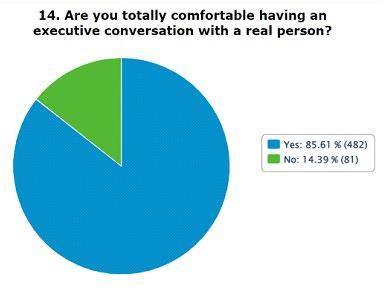
tactics, because their bosses actually want to talk to these salespeople.
I’ve spent more than two decades working with sales teams on selling through referrals, and I’ve seen what happens when they adopt a referral process. Sales reps:
● Get every meeting with prime prospects with one call
● Arrive with trust and credibility already earned
● Shorten their sales process because prospecting time collapses
● Beat out the competition because they get in early and build relationships
● Save money (referrals don’t cost a thing)
● Convert prospects into clients more than 50 percent of the time (typically more than 70 percent)
Referral selling is your biggest competitive differentiation. No other marketing or sales approach comes close to the results you get with referrals.
In my experience working with sales leaders, less than 5 percent of companies have committed to referrals as a strategy and implemented a referral system with precision.
Salespeople know how to talk to executives, but not executive assistants? It seems counter-intuitive. Shouldn’t the former be easier than the latter?
This does, however, explain why prospecting is so challenging for most sales teams. They’re making cold calls—and getting frozen out.
The Trick to Getting Past the Gatekeeper: Be a Welcome Call
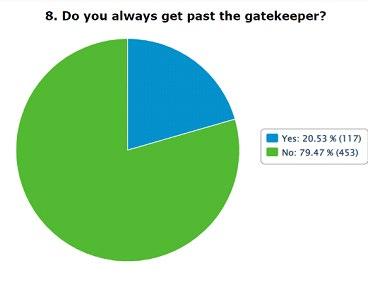

It’s much, much easier to get to decision-makers when you have a referral introduction. Prospects will always take meetings with B2B sales reps who’ve been referred by colleagues they know and trust. There’s no need for duplicitous gatekeeper
Here’s the deal: Your current clients would be happy to refer you, but they probably won’t think to do so unless they’re asked. And your team won’t ask for referrals unless it’s part of your sales process.
So, what are you waiting for? Give them a way to get past the gatekeeper for good.
This article first appeared here
How To Get Past The Gatekeeper
Submit Your Articles HCM Sales, Marketing & Alliance Excellence presented by HR.com FEBRUARY 2023 11
Joanne Black is the Founder of No More Cold Calling. Would you like to comment?
CALLING ALL HR MARKETING GURUS - SHARE YOUR EXPERTISE WITH OTHERS!
Are you an expert in Marketing in the Human Capital space? If yes, you’re invited to submit articles for inclusion in our publication, HCM Sales, Marketing & Alliance Excellence!
This publication helps Sales and Marketing professionals in the Human Capital space learn emerging trends to help them in their business and now you can share your marketing expertise with them!

Check out our magazine here
Our readers are interested in a number of topics including:
● Marketing hacks for HR Solution Providers
● Building relationships with current and potential clients
● Tradeshow expo halls - best practices for ROI
● Branding and your online presence
● Aligning Marketing roles with your business growth strategy
● Marketing Tactics to increase ROI
● Martech Enablement
● Marketing Analytics
● How to define a “real lead” and how to count its sale value
● How to nurture stronger partnerships between marketing and sales
● Tips for working with influencers and analysts
● Market planning process
● How to build a brand
● How to win with PR
● How to use Social to drive brand recognition and sales
● Your approach to producing and disseminating meaningful thought leadership
● How marketing needs to evolve for success
Article submission deadline: 1st of each month 1
Kindly let us know if you’d be interested to feature your article in our magazine by emailing the editor at ddamodaran@hr.com. You can also review our submission guidelines by clicking here Also, if you are in marketing in the human capital space, we invite you to host a webcast for our HR Marketing Institute. For more details, please email Shelley Marsland-Beard at smarsland@hr.com
.
The Perplexing Power Of Process And Methodology In Complex B2B Sales
Should sales process be adaptable? Agile? Fluid?
By Mike Kunkle, SPARXiQ
“As in other studies we’ve done, this year’s enablement study found that sales process and sales methodology adoption rates above 75% resulted in above-average gains for revenue plan attainment, quota attainment, and win rates, with a big boost at adoption rates greater than 90%.”
Adoption Rates of Sales Process and Sales Methodology and Performance Impact
From the lowest to highest adoption rates in the chart, the data represent:
● 15.3% increase in organizational revenue plan attainment
● 31.8% increase in individual quota attainment
● 30% increase in win rates for forecasted deals
From the average to the highest adoption rates, the increases are:
● 8.9% increase in revenue plan attainment
● 17.1% increase in quota attainment
● 19.7% increase in the win rates
So, let me ask you…
● What CEO or senior sales/revenue leader doesn’t want to report increases like these?
● What sales or revenue enablement leader doesn’t want to help deliver this kind of business impact?
<25% 76%-90% >90% Revenue plan attainment (average: 102.5%) 97.6% 106.7% 112.5% Quota attainment (average: 60.0%) 49.4% 64.0% 72.4% Win rate for forecast deals (average: 46.4%) 40.4% 54.1% 57.8%
~ CSO Insights 2019 Sales Enablement Report (p. 32)
Submit Your Articles HCM Sales, Marketing & Alliance Excellence presented by HR.com FEBRUARY 2023 13 Top Pick
Perplexing Inaction, Despite Compelling Evidence
This repeated finding by CSO Insights (and other sales researchers – see this and this as just two examples) should have made a splash for the sales profession that was bigger than dropping a six-ton wrecking ball into a backyard swimming pool.

Yet, to continue with the metaphors, rather than the fierce roar of a mighty lion, the collective impact of this reporting on the whole of the sales profession, was more like the whimpered mewl of a newborn kitten.
Worse, recently, I’ve read an increasing number of articles and posts about how buying has become so convoluted and non-linear, that given that and a buyers’ market, sales process just doesn’t matter anymore. To which I offer:
repeatable, replicable, and scalable workflow to deliver predictable results. Total Quality Management (TQM), Business Process Management (BPM), Six Sigma, and Lead Sigma are powerful methods for this sort of work. It’s also how I have applied systems thinking to The Building Blocks of Sales Enablement to deliver business impact (see this link for a webinar recap on the business impact topic).
You see where I’m headed, though, right? There are limits to how you can do this when you are working with external factors outside of your span of control. To the point of those who suggest that sales process is no longer linear, the root cause of that is the fact that the buyers are in control of their journey, timing, budgets, when they respond, and how they work together to decide. Some committees hum; others are more like a ragtag band of misfits. Sellers sometimes work with professional procurement leaders and company executives who work together frequently and have processes and policies to guide their purchase pursuits. Other times, sellers work with ad hoc buying committees who have never worked together to make a purchase decision, and who are operating without an aligned process, policies, or even guidelines and guardrails. Worse, sometimes, they are at odds, with conflicting objectives, outcomes, risks, and political ramifications.
Now, by way of full disclosure, I love this Deming quote, which I wholeheartedly believe remains true. But when applied to the modern sales process that is aligned with the modern buyer’s journey, that doesn’t mean I completely follow his original thinking about eliminating all variation and deviation.
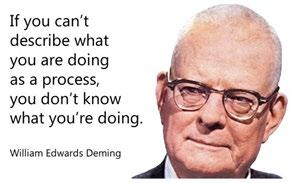
Thoughts on Viewing Sales Process Differently
If I were doing process design internally, creating processes for something within my span of control at work, or running engineering or a manufacturing line, I would follow Deming’s advice to a tee, to reduce or eliminate variation and deviation as much as possible. This is how you reduce errors and produce
The Perplexing Power Of Process And Methodology In Complex B2B Sales
Submit Your Articles HCM Sales, Marketing & Alliance Excellence presented by HR.com FEBRUARY 2023 14
Guess what? That in itself is not a change. Buyers may research and work more on their own, or digitally, but none of the above is new for the complex sale, other than the buying committees have increased in size which makes it more “complex.”
Gartner and others now cite how convoluted the average buyer’s journey has become (see this chart, from Gartner, as an example). And as I just mentioned, on the far left side of a “disorganized/ organized” sliding scale, there are cases where it’s absolute chaos and rife with infighting. Even on the far right, with disciplined workflows, it’s not easy, and often harder if an RFP or RFI process doesn’t allow open communication. This sliding scale and the
difficulties inherent on both sides, is why many now cite the need for adaptability in sales process.
Should sales process be adaptable? Agile? Fluid? Yes, absolutely! I agree. (By the way, I’ve never advocated rigidity.) Yet, it’s still documentable; still a process. It has stages, objectives and tasks per stage with exit criteria for each, and possibly, for each individual buyer per stage. And, it should be aligned with the buying process that is in place (whatever it may be, however loose or disciplined it may be, or whatever Mutual Action Plans you co-create with buyers to hammer out your own path.

This makes sense, right? The process includes the stages, objectives, tasks, and exit criteria. The seller side can actually align to the larger customer lifecycle with the “sales process” or Opportunity Management aligning with the buying process or purchase pursuit. Lead generation doesn’t align anywhere in particular, because when reps conduct outbound prospecting, they may not know where the customer is in the larger lifecycle yet. The above diagram is only one possible example and is a consultative example, where a solution is sourced and implemented (rather than a transactional example where a supplier is sourced and products are purchased, used, and replenished). Yes, the process depicts a progression, but buyers (and sellers) may not always move through the process linearly.
With this laid out now, I worry more about those saying sales process is no longer valid. Or those who fully buy into that Gartner spaghetti map (more

than Garter intends, even), as if it’s indiscernible or unmanageable. On that, I call B.S. (By the way, even Gartner isn’t saying that – they discerned it and documented it – they’re just saying it’s a long, hard slog sometimes.) You just have to figure out how the buyers’ journey you’re navigating might be different, or whether different decision-makers might be in different stages at the same time, based on how you have (or haven’t) satisfied their exit criteria, in your sales process efforts.
Read the complete article here
The Perplexing Power Of Process And Methodology In Complex B2B Sales
Mike Kunkle is Vice President, Sales Effectiveness Services, at SPARXiQ. Would you like to comment?
Submit Your Articles HCM Sales, Marketing & Alliance Excellence presented by HR.com FEBRUARY 2023 15
Four Ways To Improve Decision-Making Even When You’re Stressed
Rise above the immediate stresses of the moment
By Dr. Jim Loehr, Human Performance Institute, and Dr. Sheila Ohlsson Walker, Tufts University

Are you facing a big decision, but feeling too stressed to make it? Have you found yourself hyper-focusing on the granular details of the decision, which is most likely increasing your anxiety instead of lessening it? Try stepping back to see the big picture and prioritize what matters most to you, both now and in the long run.
If you can rise above the immediate stresses of the moment, you will be able to make decisions that are grounded in core values, beliefs, and high ethical standards. Below are four steps you can take to overcome stress so that you can make thoughtful, clear-eyed decisions that work for you.
1. During Particularly Stressful Times, Stay Connected to Others
Human beings are, first and foremost, social creatures. Our ancestors survived by bonding together to face threats. Those who remained isolated and fought their battles alone found their odds of survival severely reduced.
Nature has equipped us with a powerful stress-combating hormone called oxytocin, called “the love hormone” by some scientists. It is produced by the posterior pituitary gland and inhibits the release of stress hormones like cortisol, thereby moderating fear and anxiety. Oxytocin is a primal ingredient in our
recipe for survival, fueling the overwhelming feelings of love and connection a mother feels when she nurses her newborn baby.
Oxytocin also enhances emotional bonding and facilitates trust between individuals. Feeling compassion and love for others, experiencing gratitude and deep connection stimulates the release of oxytocin and can become a powerful perspective-balancing agent in decision-making.
2. Seek Perspective in the Storm
Best-selling author Richard Carlson, in his book “Don’t Sweat the Small Stuff - And It’s All Small Stuff” argued that the little things that are essentially meaningless in the big picture can literally take over our lives.
Submit Your Articles HCM Sales, Marketing & Alliance Excellence presented by HR.com FEBRUARY 2023 16
What is needed when the storms of stress are fully raging is PERSPECTIVE. And sound decision-making without the right perspective is virtually impossible. Because of the profound way in which a shift in perception, seeing a situation through a new lens, can instantly change our view of the world, every effort should be made to seek the perspective that makes responsible, well-informed, and thoughtful decisions possible.
3. Take Action on the Things You Can Control and Let the Rest Go
When you worry about things that are beyond your control, all you are doing is wasting precious energy.
What things can you control after a bad car accident, after your home is foreclosed upon, after a failed marriage? If chaos is everywhere, prior to any important decision, make the effort to create order somewhere. Make your bed, clean the house, wash your car, reach out to a friend, meditate or go for a relaxing walk in nature.
Make a list of what you can control and what you cannot. Do something constructive that reduces chaos before making important choices. Continue
taking positive steps, in advance of important choices, to make yourself and your situation right.
4. Time Travel to Get the Priority Right
Prior to making your next big decision, when your stress levels are high, assess whether your angst and worry are truly necessary and appropriate by jumping ahead 3 months, 1 year, 5 or even 10 years to determine the real significance of the crisis you are facing. When looking forward through the lens of time, how important is it really? How will you reflect back on this at the end of your life? Was it worth the effort you put into it, or a complete waste of time and energy?
So often, peering through the lens of extended time brings a much clearer sense of what’s really at stake in the decision you are about to make. If an extraordinarily complex, potentially life-altering decision is front and center, viewing the situation from a distance can add a valuable perspective that clarifies the risk-reward profile. You may discover that the consequences of a particular decision are simply too great to move on it, or conversely, that the short-term consequences pale in comparison to a choice that has strong potential to move emotional tectonic plates in the direction of True North.
Dr. Jim Loehr, the co-author of WISE DECISIONS, is a world-renowned performance psychologist, Co-Founder of the Human Performance Institute, and author of eighteen books including, The Only Way to Win. He also co-authored the national bestseller The Power of Full Engagement. Dr. Loehr is well known for his individual work with top-flight athletes and Olympians. He holds a masters and doctorate in psychology, serves on several scientific boards, is a full member of the American Psychological Association, and has been inducted into three Halls of Fame.

Dr. Sheila Ohlsson Walker, the co-author of WISE DECISIONS, is a behavioral geneticist. She is a Senior Scientist at the Institute for Applied Research in Youth at Tufts University, a Visiting Assistant Professor at the Johns Hopkins University School of Education, and an Adjunct Assistant Professor of Pediatrics at the George Washington University School of Medicine and Health Sciences. Would

Four Ways To Improve Decision-Making Even When You’re Stressed
you like to comment?
Submit Your Articles HCM Sales, Marketing & Alliance Excellence presented by HR.com FEBRUARY 2023 17
How To Build A HighQuality Email List That Drives Business Success
Email
offers opportunities for personalization,
custom design, automation and analytics
By Gerri Knilans, Trade Press Services
Email has been around for more than 50 years, yet it feels more rooted in our daily lives than ever. Even with the growth of social media and a constant flux of new platforms and applications, email remains a pillar for digital communications, including marketing.

Research shows that 77 percent of B2B companies use an email marketing newsletter as part of their content marketing strategy. Additionally, 79 percent of B2B marketers find email to be the most successful channel for content distribution.
Email offers opportunities for personalization, custom design, automation and analytics. All of these play a vital role in boosting prospect and customer engagement with your brand. Of course, an email strategy is only as strong as its foundation: a targeted, viable email list.
Submit Your Articles HCM Sales, Marketing & Alliance Excellence presented by HR.com FEBRUARY 2023 18 Top Pick
Building an effective email list takes time and strategic effort.
7 Tips for Growing a Targeted Email List
In the past, it was standard practice to purchase email lists from a third-party vendor. Yet there’s no guarantee you will get anything in exchange for your money. Contacts could be outdated, information could be incorrect, and the list could be filled with email addresses that will immediately report your emails as spam.
Additionally, new privacy regulations prohibit companies from emailing individuals without their expressed permission. Failure to abide by these consumer-protection laws can result

in hefty fines and suspension of email marketing capabilities. With these issues in mind, companies need to take a proactive approach to building email lists from people who engage with their brand in some way. Here are seven tips for developing an email list that stimulates business growth:
1. Start with your close network and existing clients It’s easy to get caught up in the goal of lead generation and pursuit of new business opportunities. It’s likely, however, that you already have a rich network of existing clients, partners, stakeholders, colleagues, and industry partners who would be interested in hearing from you. This is the place to start building your email list. These individuals already
recognize your brand and are most likely to engage with your content.
2. Include a call to action in all marketing content
A call to action (CTA) plays a powerful part in any marketing initiative to help answer the question “what now?” after a prospect consumes a blog, article, video, advertisement, email or another piece of content. A CTA can propel readers to share their contact information or sign up for an email newsletter. A powerful CTA is brief, eye-catching and encourages readers to take immediate action. Effective CTAs keep potential customers engaged and guide them through the buying journey
How To Build A High-Quality Email List That Drives Business Success
Submit Your Articles HCM Sales, Marketing & Alliance Excellence presented by HR.com FEBRUARY 2023 19
3. Use a website pop-up. Much like a well-placed call to action, a website pop-up can seize the opportunity to collect a visitor’s email address when a lead is ready to engage. While there are some mixed opinions about pop-ups as an engagement tactic, their strategic use has made its way into many of today’s website designs. A well-placed pop-up engages a prospect before they click away or when they hit a certain point in a piece of content. This is an ideal way to capitalize on a user’s interest at its height.
4. Utilize a landing page to exchange long-form content for contact information A landing page is a standalone web page designed for an individual marketing or advertising campaign. Users arrive at a landing page when they click a link in an ad, social media post, email or other marketing initiatives. The dedicated page typically details an offer in exchange for the user’s information. The offer might include long-form content such as a white paper, e-book, video content or other valuable content. When a user is willing to exchange their contact information for valuable content, they demonstrate a strong interest in your brand and solutions.
5. Embed an opt-in feature in your website navigation It’s common practice to include an email newsletter signup on an individual landing page. Also,
consider embedding sign-ups in your website’s navigation, so they appear on every page. This gives users ample opportunity to sign up no matter which page they are viewing.
6. Encourage social media followers to opt in One might assume that your social media followers already have access to most of your content and communications. This simply isn’t true. Social media is a powerful community-building tool. Yet, email provides opportunities to segment lists, and better personalize messages and offers in a way social media cannot easily replicate. By inviting social media followers to share their email contact information, brands can interact with them on a more individualized level.
7. Leverage webinars, conferences and networking events Take advantage of community connections developed through webinars, conferences, courses and speaking engagements to build your email list. Email is a vital channel to follow up with new connections, including thought leaders who share actionable insights, new strategic partners and potential customers.
Valuable Insights Drive Engagement
An email list represents the businesses and individuals who can gain the most from your insights and solutions. When building a list, don’t simply focus on increasing the number of
contacts. Successful marketers understand that a large email list doesn’t equal a high engagement rate. Concentrate on building targeted lists that can be segmented to deliver marketing content at the appropriate stage in their buying journey. Lists on their own, however, don’t have any magical power. To be successful, marketers need to consistently develop and deliver valuable content that resonates with each audience. With a strategic approach to email marketing, companies can nurture the engagement that is essential to business growth.
Gerri Knilans is the President of Trade Press Services. As marketing communications strategists, serving organizations of all sizes and types since 1995, the company provides writing, media outreach and general marketing support to help clients accelerate growth and generate more visibility, credibility and name recognition in their marketplaces.
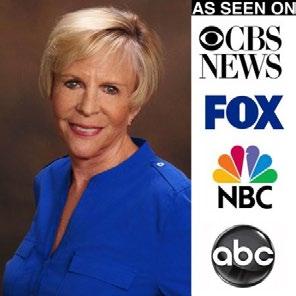
you like to comment?
Would
How To Build A High-Quality Email List That Drives Business Success Submit Your Articles HCM Sales, Marketing & Alliance Excellence presented by HR.com FEBRUARY 2023 20
Have A Trust Deficit?
Here’s how to build and keep organizational trust
By Howard M Guttman, Guttman Development Strategies
“In God we trust. Everyone else pays cash.” It’s not exactly a feel-good, trusting message to give customers, though the wary sentiment is understandable. Now, imagine an organization in which widespread distrust was the norm. It would create a kind of dystopian workplace, in which people focus on looking backward to protect themselves rather than ahead of customers, competitors, strategy, and business operations. Many studies over the years have shown how a pervasive lack of trust can freeze an organization’s vitality and creativity.
Especially today, there is a proliferation of trustbusters: virtual rather than “real” social interaction, concerns about health and safety in the workplace, cut-back management, and job insecurity, and the evolving hybrid organization.
“Trust” is an inherently ambiguous word. The best way to gauge the trustworthiness of colleagues is to look at four key trust factors:

● Are you confident that someone is capable? That is, does the person have the ability and skills to get the job done?
● Is the individual accountable? In other words, does the individual follow through on commitments?
● Is the individual authentic? Put differently, is the individual honest and a truth-teller?
● Is the individual at stake for others? Does the individual have “my back” and is he or she committed to my success?
Submit Your Articles HCM Sales, Marketing & Alliance Excellence presented by HR.com FEBRUARY 2023 21
We’re currently working with a consumer-products company that is undergoing major organizational changes. Unfortunately, the senior team has not clearly and consistently explained the what, why, and how of the changes. Managers are asking what the leaders are hiding. There is a growing feeling that senior executives are playing dodgeball with the truth. As a result, engagement has hit rock bottom; underground behavior is rampant; everyone is grousing about the senior team; and productivity has taken a nosedive. It’s what you’d expect when there is a trust deficit.
Without trust, people might play along, but they will not be “all in” and committed to the success of the enterprise. HR professionals are in a unique position to repair trust deficiency. For example, in the case of the consumer-products company, I worked with the CHRO to encourage senior leaders to have clear, empathetic, honest conversations with the next levels. Their message: “I’m concerned. I know everyone has gone through difficult times. I want to make sure that you’re okay, and I want to get your honest feedback regarding how you’re feeling. I would also value your recommendations as to what, in hindsight, I should have done differently.”
Neutrality and non-defensiveness in such moments of truth are critical! They signal that rebuilding trust is not just lip service.
Truly great, trusted business leaders share a common characteristic: authenticity. They are down to earth and comfortable expressing what they’re feeling. They play it straight and are perceived by everyone in the organization as doing so. If they can’t tell it like it is for reasons of confidentiality, they’ll say so.
At a global pharmaceutical company that’s facing all the challenges you’d expect in today’s environment, the vice president of human resources worked closely with the newly appointed head of a major division. She counseled the executive to avoid falling into the same trap as his less-than-genuine predecessor. He needed to be forthright about the tough road ahead, highlight his concerns and the needs of the company, explain the roles and accountabilities required to remain competitive, and take time to solicit input instead of pretending to have all
the answers. As a result, the leader showed up as being candid, receptive, and vulnerable. His approach won over colleagues. He could be trusted, and they felt empowered.
CHROs are in a unique position to ensure that trust is baked into the culture and operation of every team, starting with the senior leadership team. Why not make trust a price of admission for joining a team? CHROs can start the trust-building process by coaching team leaders to assess their players, using the four trust factors mentioned earlier. They can provide team members with skills in conflict management, active listening, and giving and receiving feedback, and they can provide guidance on the team’s ground rules for decision-making and for resolving differences openly and honestly.
There is truth to the adage that when people show you who they are, believe them. And once they show up as untrustworthy it’s well-nigh-impossible to repair the damage. It can be done, as the VP of HR we cited earlier proved, but it’s a long, tough slog. When it comes to trust, an ounce of prevention is surely worth a pound of cure.
Smart leaders safeguard trust as a precious strategic asset, never to be compromised by them or the organizations they lead. When they do, it’s unlikely that CHROs and other leaders will have to step into the breach to attempt the mission impossible.
Howard M Guttman is the principal of Guttman Development Strategies, a Mt. Arlington, NJ leadership and organization development firm specializing in building high-performance teams, organizational alignment, executive coaching, and leadership development.. He is the author of When Goliaths Clash; Great Business Teams,; and Coach Yourself Win. Would you like to comment?

Have A Trust Deficit?
Submit Your Articles HCM Sales, Marketing & Alliance Excellence presented by HR.com FEBRUARY 2023 22
What Company Do You Admire Most?
In business, we compare ourselves to the competition
By Shep Hyken, Shepard Presentations
Do you remember being asked, “What do you want to be when you grow up?” When you’re a child, the typical answers are aspirational, such as being a doctor, a fireman, a superhero, an athlete and more.
I have a grown-up version of this question. It’s not about what you want to be. It’s not even about you. It is about your company. You may be grown up, but your company should always be developing and evolving, so the question is now about your company’s aspirations. Specifically, it’s about what company you aspire to be like. Consider this question:
If your company could be like any other company, what would you want it to be like?
In business, we compare ourselves to the competition. We often look at market share as one of the success criteria. If we’re losing market share to a competitor, we analyze why. If the reason is that they are doing something different – something we should be doing – we feel compelled to do the same. But that’s simply imitation, which means you’re commoditizing your company and products.

Submit Your Articles HCM Sales, Marketing & Alliance Excellence presented by HR.com FEBRUARY 2023 23 Top Pick
What if we looked at the bigger picture? This goes beyond looking at a competitor, who may or may not be more successful, larger or doing something different. Let’s consider imitation, but let’s imitate a company that is outside of our industry.
I recently did an informal poll on LinkedIn and asked: Which company’s customer service approach would you want your businesses to be like? There were four choices: Amazon (all online), Ritz-Carlton (high touch), Uber (super convenient) and Ace Hardware (so helpful). I found the answers insightful:
● 37% want to be like the Ritz-Carlton
● 25% want to be like Ace Hardware
● 22% want to be like Amazon
● 16% want to be like Uber
Regardless of the survey results, I’d love to take a piece of each of these brands and roll it into what we do – especially if we’re not already doing it. I’d love to give our customers a high-touch experience that is also helpful and super convenient and to create an online experience that even somewhat resembles Amazon. The combination would be amazing.
I love discussing the companies we love to do business with outside of our own industries, and that’s why. Often we find ideas and tactics that will work for us, and they are usually ideas that our competitors haven’t yet thought of. That removes us from being a commodity and positions us as unique and special for our customers. Deliver an experience your competitors don’t and watch how many of your customers say, “I’ll be back!”
Shep Hyken is a Customer Service and Experience Expert and the Chief Amazement Officer at Shepard Presentations. He is a New York Times bestselling author and has been inducted into the National Speakers Association Hall of Fame for lifetime achievement in the speaking profession. Shep works with companies and organizations that want to build loyal relationships with their customers and employees.
Would you like to comment?

What Company Do You Admire Most?
Submit Your Articles HCM Sales, Marketing & Alliance Excellence presented by HR.com FEBRUARY 2023 24
The Future of Employee Well-being


To support their workforce now and in the future, employers must revise their employee well-being programs to manage the effects of the Covid-19 crisis: including increases in employee burnout, mental health issues, and disengagement.
This virtual event will include two days of expert sessions on strategies for supporting employees and their families, adapting to changes in employee benefits and health plans, and addressing the effects on workplace health and safety. Organizations increasingly understand that long-term employee performance hinges on that well-being.
The research will also explore related technologies and services such as health operating systems, virtual healthcare, mental and financial wellness solutions, and more.

www.HR.com
FREE Virtual Event June 7-8, 2023 Register for Free sales@hr.com | 877-472-6648
Leadership In The New World Of Work
Four ways to get into your leadership Genius Zone
By Catherine Mattiske, TPC-The Performance Company
TheGenius Zone is a powerful concept that can help anyone become an effective leader. By accessing your Inner Genius, you can learn to navigate the complexities of the modern work environment and communicate effectively with colleagues. Through this process, you will develop the strong leadership
skills necessary for success in today's world.
In the Genius Zone, you will unlock your true potential and identify new ways to approach projects and tasks. You'll gain a better understanding of yourself and your team, as well as how to
maximize their strengths to meet organizational goals.
Learning how to ask powerful questions and having difficult conversations are key components of successful leadership that you can master through exploring the Genius Zone.

Submit Your Articles HCM Sales, Marketing & Alliance Excellence presented by HR.com FEBRUARY 2023 26
Here are four ways to get into your leadership Genius Zone:
1. Learn New Leadership Strategies
The new world of work is constantly evolving and so are the leadership skills needed to stay ahead in the game. To learn effective leadership strategies that can help you navigate this ever-changing landscape, it’s important to understand how technology, globalization, and innovation have changed the way we lead. From remote working to virtual collaboration, having a firm grasp of these principles is essential for developing a successful team—no matter where they may be located. Through understanding these trends, you can learn how to effectively communicate with colleagues across different time zones while still providing strong leadership that encourages positive results. With an eye on the future and a willingness to learn new techniques, you can become a leader who can successfully manage projects even when working with dispersed teams. By taking the time to learn about these strategies, you can step confidently into the ever-changing world of work and lead with confidence.
2. 360° Connection
Leadership in the new world of work requires 360° connection— not just between leaders and their direct reports, but also peers, colleagues, customers, and partners. To be a successful leader in today’s business
landscape, it is essential to create meaningful relationships with those you interact with on a professional level. This 360° connection fosters trust and respect, which is critical for effective communication, collaboration, and development. Leaders must be agile in their approach to connecting with others to stay ahead of the competition and ensure that everyone remains aligned on common goals. 360° connection encourages the sharing of ideas and feedback, which ultimately leads to more innovative solutions for business challenges. Ultimately, 360° connection is an essential aspect of leadership in this new world of work. It enables leaders to stay connected with their teams, build strong relationships, and create a sense of community that drives business success.
3. Communicate “Their Way”
The modern workplace is defined by constantly evolving needs and demands. Leaders must therefore be equipped with the skills to adjust their approach accordingly, especially when it comes to communication. Communication “their way” is a key element of successful leadership in the new world of work. This involves understanding everyone within your team and communicating in a style that resonates with them. Understanding how to use various forms of communication, such as an individual’s Inner Genius Archetype, can be a powerful tool for establishing trust and creating an environment where everyone
feels comfortable sharing their ideas. Communication “their way” also involves finding creative ways to keep team members engaged in the work you're doing and ensuring that everyone feels valued and important. Ultimately, understanding your team members’ needs and communicating on their terms will help you foster an environment of trust, openness, and collaboration that allows everyone to be more successful together. With this in mind, it is essential for leaders to be flexible and adjust their approach when needed in order to truly maximize their team’s potential.
In addition, leaders need to be comfortable creating an environment that encourages employees to tap into their inner genius — a “Genius Zone” where they can shine and demonstrate their unique gifts. Communication in the new work world should focus on actively engaging team members in meaningful dialogue, drawing out their ideas, and encouraging them to think outside of the box. By doing so, leaders can foster an environment of collaboration and creativity — one in which everyone feels valued and inspired to do their best work. Communication is a two-way street, after all. When employees feel heard and respected, they will be more likely to share their voices and contribute their unique perspectives to the workplace. With successful communication in the workplace, everyone can thrive.
Leadership In The New World Of Work
Submit Your Articles HCM Sales, Marketing & Alliance Excellence presented by HR.com FEBRUARY 2023 27
So, when it comes to leading in the new world of work, remember that communication is key! Establish an environment where team members feel comfortable expressing their thoughts and opinions — a place where they are encouraged to tap into their inner genius and contribute their unique talents to the workplace.
4. Influence for Opportunity
In order to succeed in the new world of work, leaders must be able to influence for maximum opportunity. Influence is no longer about hierarchy or title — it’s about engaging and empowering others to take ownership of the vision, goals, and objectives of an organization. Influence also requires understanding the different perspectives that exist within teams and creating a safe environment where team members can come together to share ideas and collaborate.
Leadership in the new world of work is a challenge that requires business leaders to think differently. It is essential for them to connect with their employees, understand their goals, and develop an environment for success. Influence for opportunity has become a critical component of modern leadership; it involves creating relationships, building trust, and communicating effectively.
To build maximum opportunity to influence, business leaders must focus on connecting with their team and forming relationships.
This is done by understanding each individual’s goals, strengths, and weaknesses so that they can form an environment in which everyone can succeed — the collective Genius Zone. It also involves communicating effectively to ensure everyone is on the same page.
successful in this rapidly changing world. Keep your team connected with a 360° view of what's happening and make sure you're communicating with them in a way that works for them. Use your influence to create opportunities for your team members to shine. When everyone is working in their Genius Zone, you'll be amazed at what your team can accomplish.
Finally, influencing for opportunity requires modern leaders to take responsibility for the success of their teams, recognizing that every individual’s contribution is critical to achieving results. They must foster an atmosphere of collaboration and trust where everyone feels comfortable contributing and sharing ideas.
Conclusion
Discovering your Inner Genius is essential for achieving success in the new world of work. It enables you to take charge, make smart decisions, and inspire others with your leadership style. By tapping into your Genius Zone, you can become an effective leader in any setting — whether it’s online or offline!
Leaders who can learn and adapt quickly will be the most
Global business educator and author, Catherine Mattiske , is the founder of TPC — The Performance Company, a leading training and consulting organization that has worked with Fortune 100 companies worldwide. Established in 1994, TPC has offices in Sydney, Los Angeles, New York, London, Singapore, and Basel (Switzerland). The author of more than 30 books, her latest is “Unlock Inner Genius: Power Your Path to Extraordinary Success” (September 2021). Discover your team’s Genius Quotient at thegeniusquotient.com
Would you like to comment?

Leadership In The New World Of Work Submit Your Articles HCM Sales, Marketing & Alliance Excellence presented by HR.com FEBRUARY 2023 28
Discovering your Inner Genius is essential for achieving success in the new world of work.
Will The 2023 Economy Be Better?
The law of familiarity transcends economic uncertainty
By Karla Jo Helms, JoTo PR Disruptors
Asskilled labor shortages continue, demands for remote work options and higher wages have changed the landscape for employers.(1) This substantial shift hits businesses as the economy threatens a recession. (2) It’s tempting to pull back and cut marketing budgets. However, advertising is a major economic driver and supports about 18% of all U.S. jobs.(3) Historically, companies that proactively market during a recession recover faster, sometimes gaining ground against competitors.(4) Crisis management veteran, Karla Jo Helms of JOTO PR Disruptors, an ‘Anti-PR’ agency that puts innovative startups on the map, advocates efficient marketing strategies to lower customer acquisition costs while maintaining maximum visibility.
“During uncertain economic times, marketing seems like an easy cut,” says Helms. “However, out of sight is out of mind. Businesses who strategically approach marketing during downturns position themselves ahead of competitors.”
The Great Resignation forced many employers to adapt to remote workers, flexible schedules, higher wages, and competing for skilled labor.(1) Some of these changes are here to stay, but the quit rate and unemployment rates are down compared to the end of 2021.(5) This may indicate some restabilization of the labor market.
A perhaps more insidious trend is “quiet quitting” or employee disengagement. While not new, employee disengagement historically increases during recessions. The loss of productivity costs $483 billion to $605 billion annually in the U.S.(6)
Disengaged employees are unlikely to step up and take responsibility for extra tasks. And they are more likely to quit if offered another opportunity, costing the company time and money in hiring and training. Inversely, higher employee engagement correlates with a 21% increase in productivity.(6)
The debate about a recession rages. While not all economic markers point to a recession, inflation is high, while the stock market and consumer confidence are low.(2) It’s possible the U.S. can avoid a recession, but the road ahead remains uncertain.
Advertising propels sales and supports American jobs across industries.(3) Marketing is not a luxury but an economic necessity. Last year in the U.S. alone, advertising generated $7.1 trillion in sales activity, supporting 28.5 million jobs.(4)
Whether an organization is B2B or B2C, loyal customers create enduring income and drive organic growth. Businesses who over-trim marketing dollars during downturns lose market traction because of the Law of Familiarity.(7)
In sales, there is an inverse correlation between familiarity and perceived risk. When a business feels familiar, customers are confident in their purchase.(8)
Submit Your Articles HCM Sales, Marketing & Alliance Excellence presented by HR.com FEBRUARY 2023 29 TOP PICK
Research of past recessions shows that brands that “go dark” can lose as much as 24% of brand use and are more likely than competitors to lose market share.(7)
Rather than slashing marketing budgets, Helms recommends companies invest strategically to maintain visibility in the marketplace.
B2B consumers can be particularly risk-averse, making marketing more essential. Third-party validation, whether through awards, testimonials, or PR, rapidly builds the familiarity that creates loyal customers.(8)
Let people see and understand your passion and expertise. Positioning your organization as an authority through disruptively innovative PR builds respect, credibility, and trust—so people trust before they buy.
References:
1. Ferguson, Stephanie. “Understanding America’s Labor Shortage: The Most Impacted Industries.” December 28, 2022, U.S. Chamber of Commerce, uschamber. com/workforce/understanding-americas-labor-shortage-the-most-impacted-industries
2. Tepper, Taylor. “Recession Tracker: Are We In A Recession?.” Updated: Nov 30, 2022, Forbes, forbes.com/advisor/ investing/are-we-in-a-recession/
3. The Advertising Coalition. “Study from The Advertising Coalition Finds Advertising Drives $7.1 Trillion in US Sales.” May 26, 2022, MarTechSeries, martechseries.com/sales-marketing/ study-from-the-advertising-coalition-findsadvertising-drives-7-1-trillion-in-us-sales/
4. Kumar, Nirmalya; Pauwels, Koen. “Don’t Cut Your Marketing Budget in a Recession.”
Aug 14, 2020, Harvard Business Review, hbr.org/2020/08/dont-cut-your-marketingbudget-in-a-recession
5. Reed, David. “The future of the Great Resignation: weighing labor market trends as 2023 approaches.”
October 24, 2022, Sedgwick, sedgwick.com/blog/2022/10/24/
the-future-of-the-great-resignation-weighinglabor-market-trends-as-2023-approaches

6. Leadbelay. “The true cost of “quiet quitting” (aka employee disengagement).”

December 6, 2022, Leadbelay, leadbelay. com/blog/the-true-cost-of-quiet-quitting
7. Nova. “The History of Advertising in a Recession.” August 31, 2022, Create With Nova, createwithnova.com/blog/the-history-of-advertising-in-a-recession
8. George, Eric. “How Your Business Can Thrive During A Recession.” Nov 29, 2022, Forbes Business Council, forbes.com/ sites/forbesbusinesscouncil/2022/11/29/ how-your-business-can-thrive-during-a-recession/ Would
Will The 2023 Economy Be Better?
you like to comment?
Submit Your Articles HCM Sales, Marketing & Alliance Excellence presented by HR.com FEBRUARY 2023 30
Karla Jo Helms is the Founder & CEO Founder & CEO of JoTo PR Disruptors


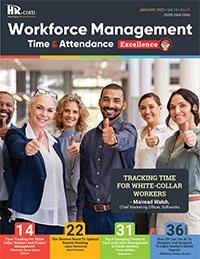
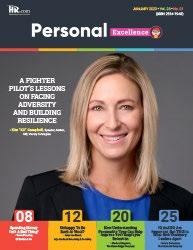
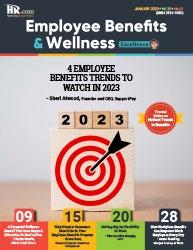
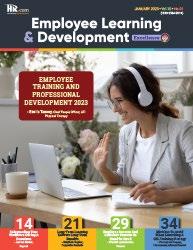
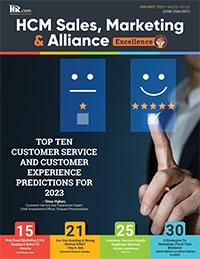

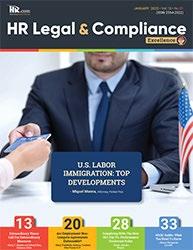
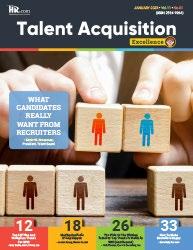
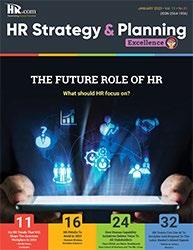
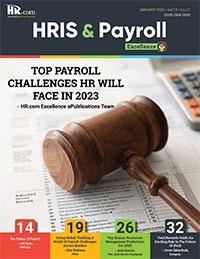
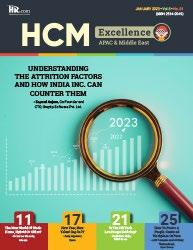
Like to submit an article? Use our online submission form or for more information go to www.hr.com/ExcellencePublications Publications 13 Targeted Publications to Reach Your Audience Informing, Educating, Enlightening and Assisting HR professionals in their personal and professional development, the Excellence series offers high-quality content through the publications!
For more information: Phone: 1.877.472.6648 | Email: ePubeditors@hr.com | www.HR.com/epubs HCM Sales, Marketing & Alliance Excellence February 2023



 - Mike Kunkle, Vice President, Sales Effectiveness Services, SPARXiQ
- Mike Kunkle, Vice President, Sales Effectiveness Services, SPARXiQ

 - Gerri Knilans, President, Trade Press Services
- Gerri Knilans, President, Trade Press Services



















 Dave Ulrich
Rensis Likert Professor, Ross School of Business, University of Michigan Partner, The RBL Group
Julie Winkle Giulioni Author, Virtual /Live Keynote Presenter, Inc.’s Top 100 Leadership Speakers
Dr. Beverly Kaye CEO, BevKaye&Co.
Dave Ulrich
Rensis Likert Professor, Ross School of Business, University of Michigan Partner, The RBL Group
Julie Winkle Giulioni Author, Virtual /Live Keynote Presenter, Inc.’s Top 100 Leadership Speakers
Dr. Beverly Kaye CEO, BevKaye&Co.

 By Joanne Black,
By Joanne Black,




































